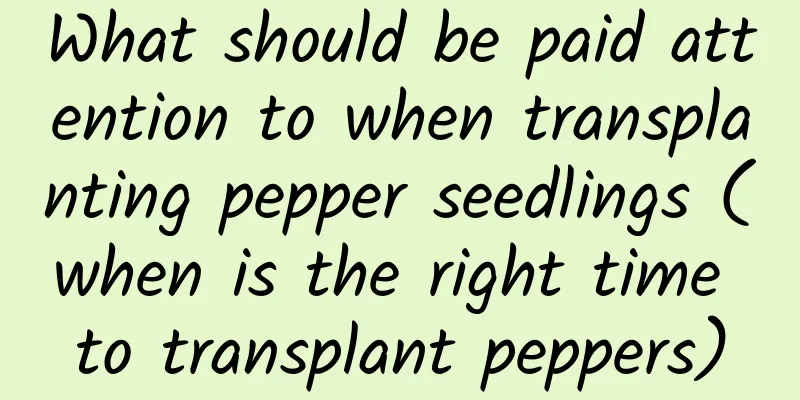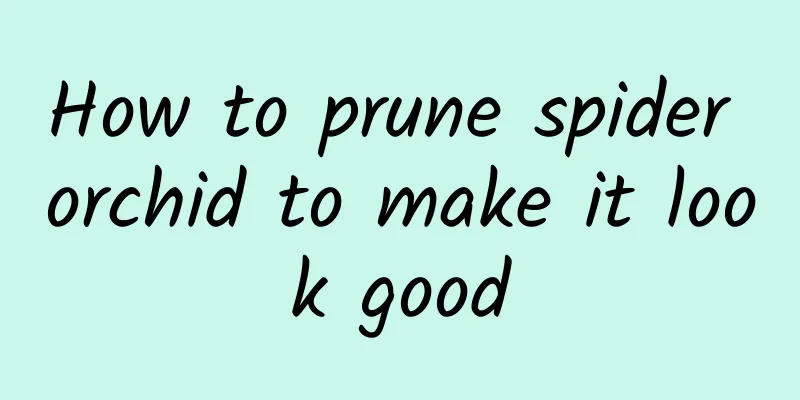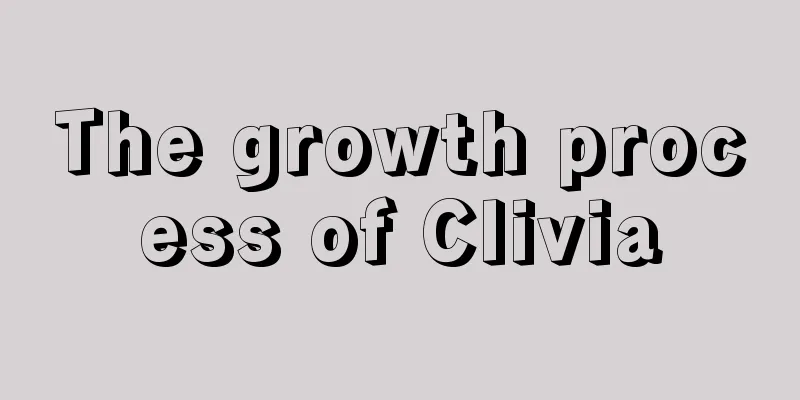What should be paid attention to when transplanting pepper seedlings (when is the right time to transplant peppers)

|
Peppers not only have a long growth cycle but also grow indefinitely, constantly budding, blooming, and bearing fruit. If they bear fruit too early when planted in an open-air vegetable garden, they must be transplanted. ① Planting timeOpen-air vegetable gardens are generally planted in spring and summer. If the seeds are planted early, the harvest period will be long and the economic benefits will be high, while if the seeds are planted late, the harvest period will be short and the economic benefits will be low . The natural temperature in spring is unstable, so the method of raising seedlings first and then transplanting can be used to harvest early. It is also suitable for other vegetables such as tomatoes, loofahs, cucumbers, beans, leeks, etc. ② Seedling cultivationSeedling transplanting is an important model for increasing production in the current planting industry, with the advantages of small investment, low cost and high economic benefits. In order to increase pepper yield, a good foundation must be laid during the seedling stage to increase the probability of producing more high-quality seedlings and reduce the probability of producing low-quality seedlings. Strictly control the temperature and humidity to prevent diseases and pests in the seedlings. The process from germination to transplanting is a long and careful management process. ③TransplantationBefore transplanting peppers, preparation work needs to be done, such as fertilizing and making beds, watering the seedbed, sterilizing and pest controlling, etc., which are all important processes. First, prepare an appropriate amount of fermented organic fertilizer, apply it to the planting site, deep plow and mix it evenly with the soil . Ultraviolet light sterilization and disinfection can reduce the incidence of diseases and pests, increase water and fertilizer retention effects, and improve the survival rate of pepper seedlings. It will take 30 to 50 days for the seedlings to grow to 20 cm in height on the nursery bed and then they can be transplanted . This period is the most critical period for transplanting. Although peppers are easy to survive, it should not be too late. If the pepper seedlings are transplanted too late, it will affect the flowering and fruiting time, and also reduce the yield. Spraying and disinfecting the seedbed the day before transplanting to improve drought resistance and preventing the roots from separating from the soil during transplanting are important links in improving the survival rate. ④Water and fertilizer managementPeppers are vegetables that like fertilizer very much. Before transplanting, you should choose fermented organic fertilizer as base fertilizer, and continue to apply fertilizer during the growing period. Preparations should be made in open-air vegetable gardens where watering is inconvenient. Apply topdressing before it rains, and loosen the soil and water the field after transplanting to promote seedling growth and increase survival rate. |
Recommend
How to identify the thorny bird flower
1. Leaves The leaves of the nightshade are basal,...
How to repot the golden barrel cactus
Why should I change the pot of golden echinops? T...
Stop it! Once the leaves become like this, they will die immediately if you water them again!
Which flowers go dormant in summer? There are gen...
The efficacy and function of lemon
Suppress appetite Lemon, like grapefruit, has the...
How to raise a lotus on the balcony? What should you pay attention to?
1. Adequate sunlight It is a plant that loves lig...
The difference between Acorus calamus and Acorus calamus
1. Differences on the leaves: The leaves of Acoru...
Fig yield per mu profit
The prospects for fig cultivation are very good. ...
How to prune bitter water rose
The significance of pruning The branches below an...
Corn planting technology and management fertilization
Corn is an important food crop, and its cultivati...
The aroma of 6 plants can actually prevent and cure diseases
Orchid fragrance It can relieve lung heat and phl...
How much is a pot of Chlorophytum?
1. Price There are many varieties, and the prices...
You can just put a pot of it in the bedroom. It will release oxygen for 12 hours, allowing you to sleep soundly without insomnia!
Kalanchoe The first thing Huahua wants to talk ab...
Why do succulents turn black in winter?
The reason why succulents will rot in winter Blac...
What is the best season to plant henna?
Henna Planting Season and Time Generally speaking...
Can the top of lucky bamboo be trimmed? How to pinch the tip
1. Can the top of lucky bamboo be trimmed? The to...









